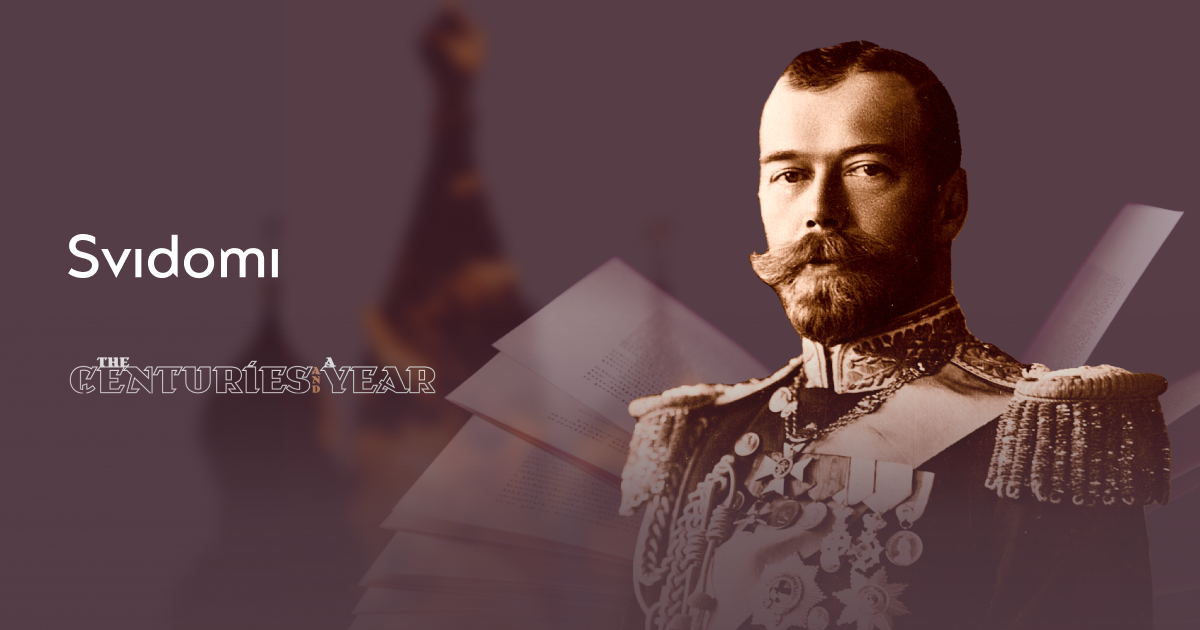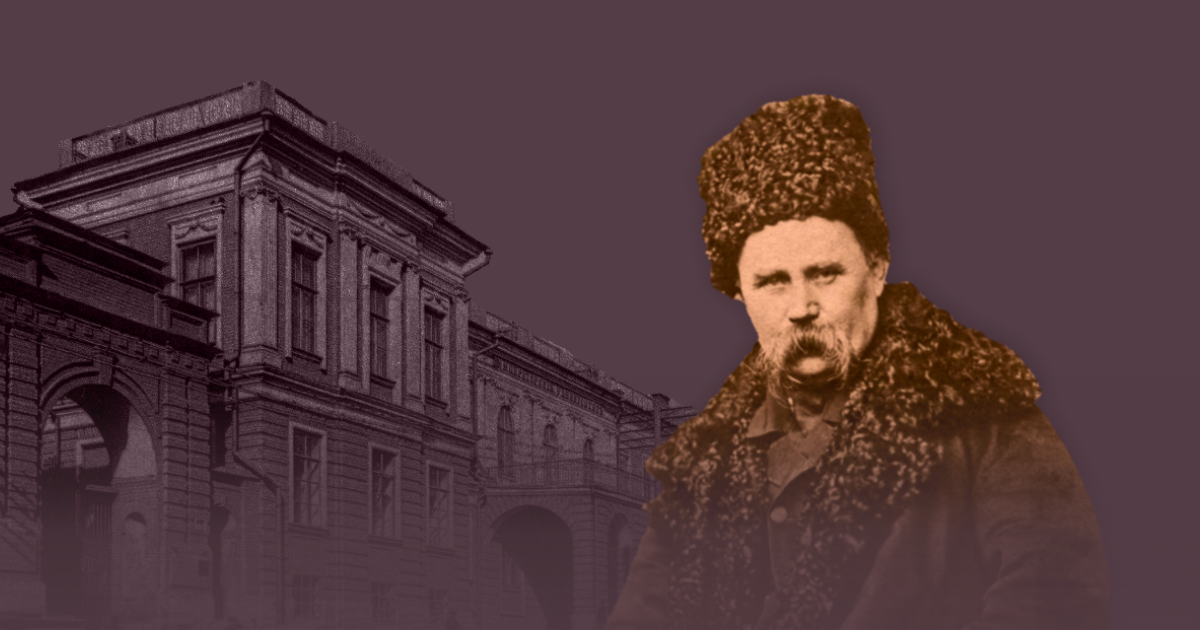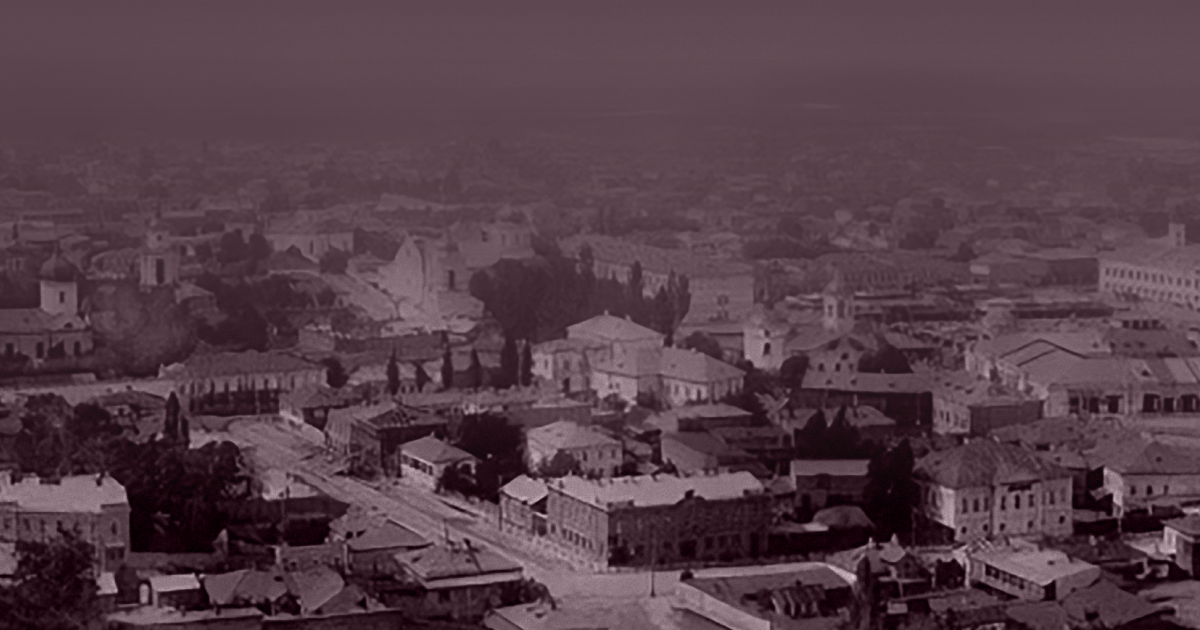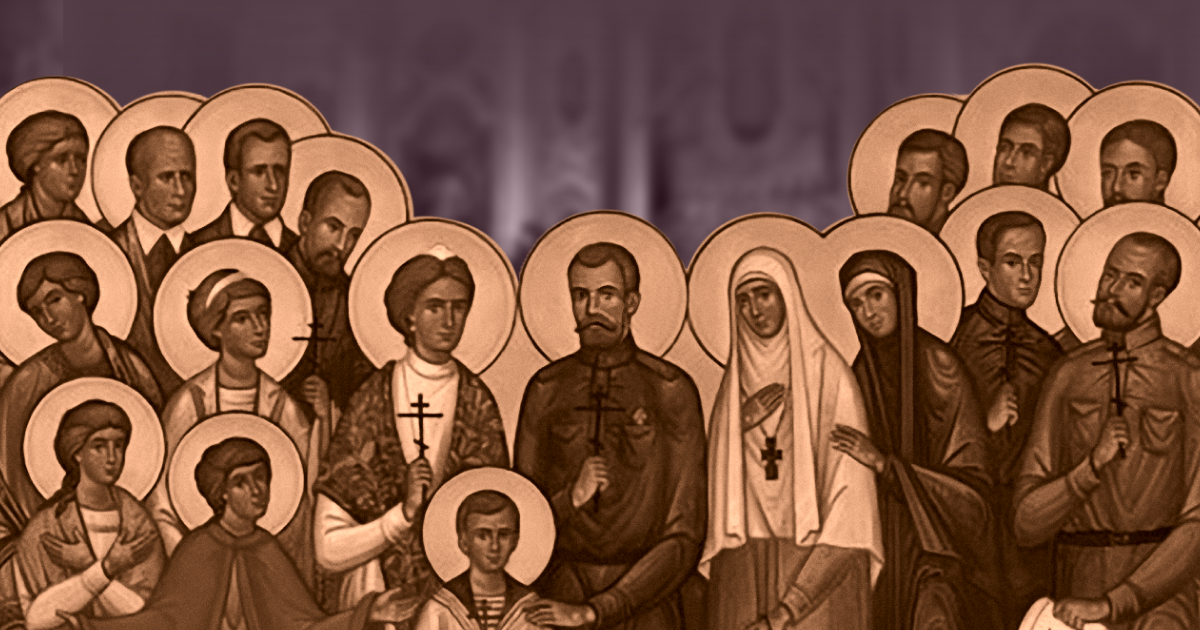The Last Russian Tsar and the Ukrainian Question

Nicholas II was the last all-Russian tsar, whose reign saw Russia's defeat in the war with Japan, the First World War, and two revolutions (in 1905-1907 and 1917). The failures of the Russian army at the front of the First World War, heavy losses, devastation, and famine caused discontent in all circles of society in the Russian Empire.
In February 1917, a revolution broke out in the empire, resulting in Nicholas II's abdication. Later, he was arrested in the Alexander Palace (Tsarskoye Selo) and sent to Tobolsk and later to Yekaterinburg, where he and his family were shot.
Around the story of the royal family's shooting, a large number of myths have formed, attracting the attention of mass culture. For example, in 1997, the American company 20th Century Fox released the animated film Anastasia: the plot centres on the daughter of Nicholas II, who allegedly survived the murder of the Romanov family in the Ipatiev House.
In November 2022, the Netflix streaming platform released the fifth season of the TV series The Crown, with one of the episodes depicting Boris Yeltsin's visit to the UK. According to the plot, Queen Elizabeth promises Yeltsin that she will visit Russia on the condition that the then president will assist in the search for and exhumation of the remains of the Romanovs (who were related to both Queen Elizabeth and her husband, Prince Philip).
Read more about the last Russian tsar and the myth surrounding him, formulated by pro-Russian circles, in the Svidomi article.
The Revolution of 1905-1907 and Ukraine
Nicholas II, like his father Alexander III, pursued a policy aimed at strengthening the autocracy, intensifying repression of the national liberation movement of the enslaved peoples of the empire, and expanding colonial possessions.
In 1905-1907, the Russian Empire experienced a revolution, one of the reasons being the lack of democratic freedoms. Then the tsar made concessions and issued a Manifesto in which he "granted" the people political rights and freedoms and promised to convene a legislative body, the State Duma.
These events had several positive aspects for Ukraine and the position of Ukrainians in the empire.
One of them is that the Duma, which began its work in May 1906, included 102 deputies from Ukraine, primarily peasants and representatives of the urban intelligentsia. The priority was to resolve land and educational issues and the issue of autonomy.
Another positive aspect for Ukrainians was that on the territory of Ukraine that was part of the Russian Empire, centres of "Prosvita" (Enlightenment) appeared.
Mainly, in Odesa, the first Prosvita appeared in October 1905. It had its library and a separate fund for publishing books. The Prosvita society in Katerynoslav (modern-day Dnipro) had about four hundred members, with four sections: drama, vocal and musical, literary, and library.
At the same time, the Prosvita Society appeared in Kyiv, founded by Ukrainian cultural figures Borys Hrynchenko, Mykola Lysenko, and Hryhorii Kovalenko.
Nicholas II and the ban on the Ukrainian language and culture
Almost immediately afterwards, however, Russia's repressive policies intensified. Nicholas II, like his predecessors, banned the Ukrainian language. In the same year, 1905, the Cabinet of Ministers of the Russian Empire rejected a request from Kyiv and Kharkiv universities to lift the ban on the Ukrainian language.
The rector of Kyiv University refused to open four Ukrainian studies departments with Ukrainian as the language of instruction for 1400 students, stating that the university was a "national institution" and that no language other than Russian could be taught within its walls.
Between 1905 and 1912, the Ministry of Education of the Russian Empire closed 12 private gymnasiums, fired 32 principals and 972 teachers, and "reassigned" 822 teachers to other schools for trying to introduce Ukrainian studies.
In 1908, the Senate of the Russian Language declared the Ukrainian language harmful to the empire. Subsequently, Ukrainian Prosvita Societies were closed in Odesa, Mykolaiv, Kyiv, Chernihiv, and Dnipro.
In 1910, the Minister of the Interior of the Russian Empire, Pyotr Stolypin, issued an order demanding that the registration of "foreign" national cultural and educational societies, including Ukrainian ones, be suspended as those "aimed at uniting 'foreign elements' based on exclusively national interests" because of an alleged security threat.
Later, in 1914, the Russian Empire banned Ukrainians from celebrating the 100th anniversary of the birth of Ukrainian poet Taras Shevchenko. A few months later, Nicholas II issued an order prohibiting the Ukrainian press. He justified his decision with the outbreak of World War I.

The Beilis Case
Anti-Semitic acts by supporters of the tsar occurred as early as the revolution of 1905-1907. For example, in 1905, Jewish pogroms took place in Kyiv and Odesa. Authorities investigating the circumstances of the Kyiv pogrom saw its cause as revenge against Jews for their participation in the revolution, and anti-Semitic monarchists committed these pogroms.
In February 1911, the Russian State Duma began discussing a bill to abolish the Jewish settlement line, which caused outrage and concern among Judophobes, representatives of monarchist parties, and the Black Hundreds (a collective name for Russian monarchist and ultranationalist organisations). They used the usual anti-Semitic accusations but particularly, the idea that Jews allegedly use Christian blood for "ritual" purposes following their religion.
The trial, which took place in Kyiv from September to October 1913 against a Jewish Kyiv bourgeois, Menachem Mendel Beilis, accused of murdering a Christian boy, Andrii Yushchynskyi, for ritual purposes, was an attempt to slow down democratic reforms. The tsarist justice system fabricated the case.

The Beilis case and the Jewish Pogroms are the consequences of Russification, based on the views of Nicholas II, as he rejected any liberal projects to reform national policy.
The myth of the little father tsar in Ukraine
Russia uses the church as a propaganda tool. With the fall of communist rule in the 1990s, the movement to rehabilitate the imperial past gained momentum in Russia. The Russian Orthodox Church made the most significant efforts.
With its assistance, the remains of the royal family were reburied, and in 2000 the Russian Orthodox Church recognised Nicholas II and his family as martyrs, that is, those who suffered in the name of Jesus Christ or under other circumstances not directly related to their faith.
The Russian Orthodox Church believes Nicholas II and his family "sincerely sought to fulfil the commandments of the Gospel in their lives." The Russian Church portrays the royal family as martyrs and Nicholas II himself as a good tsar, despite the "Bloody Sunday", the shooting and violent dispersal of a 2,500-strong peaceful demonstration of workers heading to the tsar's residence, the Winter Palace, that took place during his reign.

His canonisation opened a new stage in Russia's imperial development, the ideological basis of which is a combination of Russian imperial and Soviet symbols.
In 2017, the Orthodox Spiritual Centre of the Apostle John the Theologian in Ukraine studied the religious aspect of the canonisation of Nicholas II. After the revolution of 1905-1907, the Russian Orthodox Church was the only one of all the religious associations of the empire that did not receive any freedoms, remaining a state "department."
The centre also writes that before the outbreak of World War I, due to the policy of Nicholas II, "the church in Russia was humiliated to the extreme." Therefore, there are no grounds for the canonisation of Nicholas II.
As a branch of the Russian Orthodox Church, the Ukrainian Orthodox Church of the Moscow Patriarchate uses the narratives Russia needs among pro-Russian citizens.
The UOC-MP held solemn religious processions yearly to celebrate Nicholas II's birthday and memorial services on his death. In particular, in 2021, a procession was held in the Chernivtsi region in honour of the "Royal Martyrs and Tsar of the Russian Empire Nicholas II," whose participants advocated friendship with Russia and carried portraits of Nicholas II, even though his policy was anti-Ukrainian.
In the context of the Russian-Ukrainian war, the Russian church and its branch in Ukraine support aggression and bless the Russian military.


